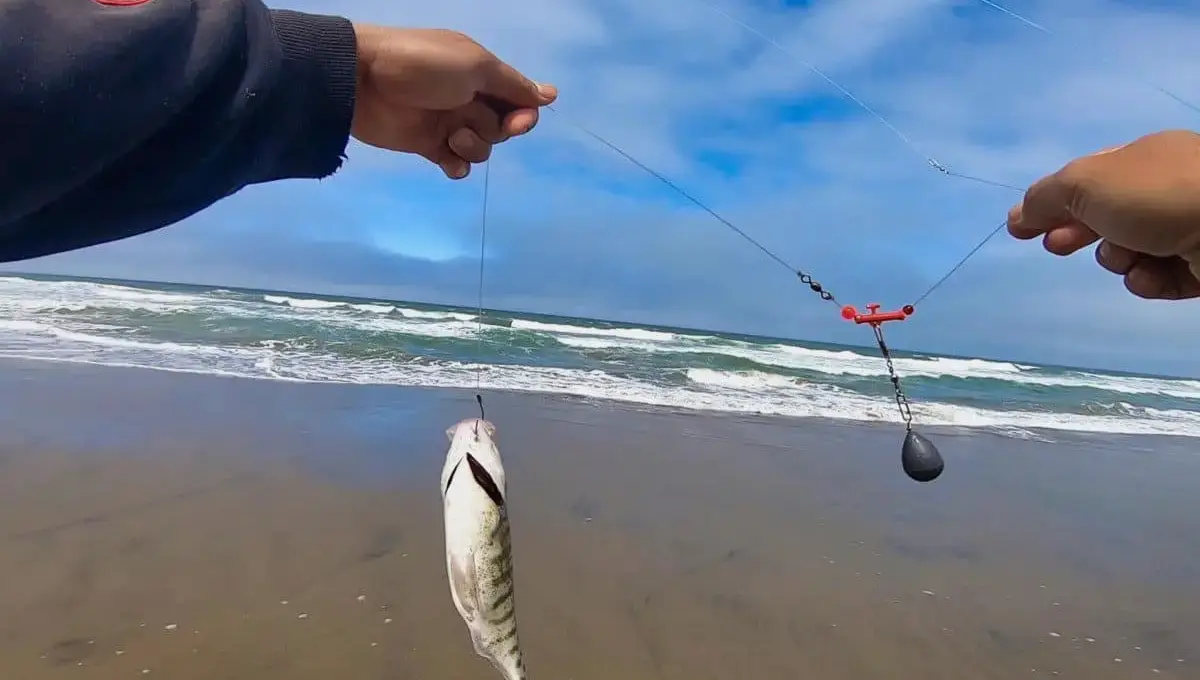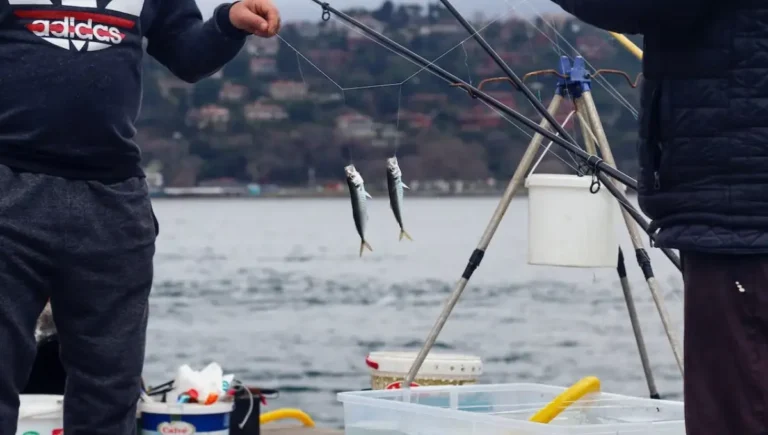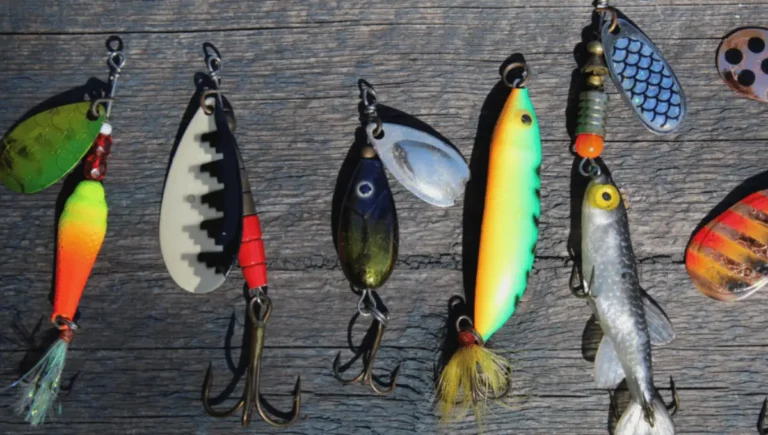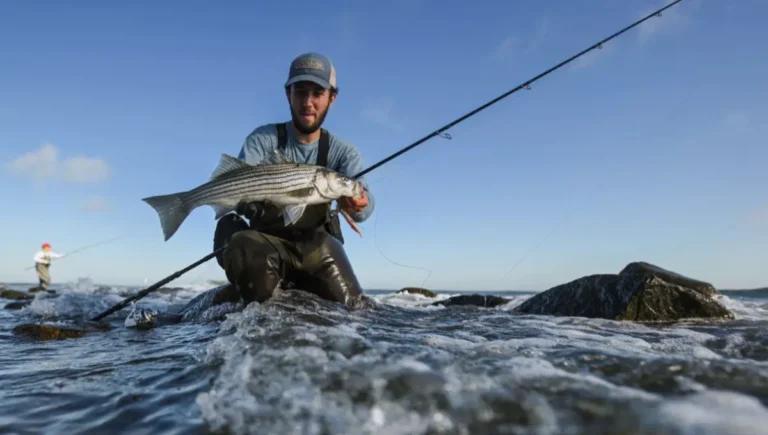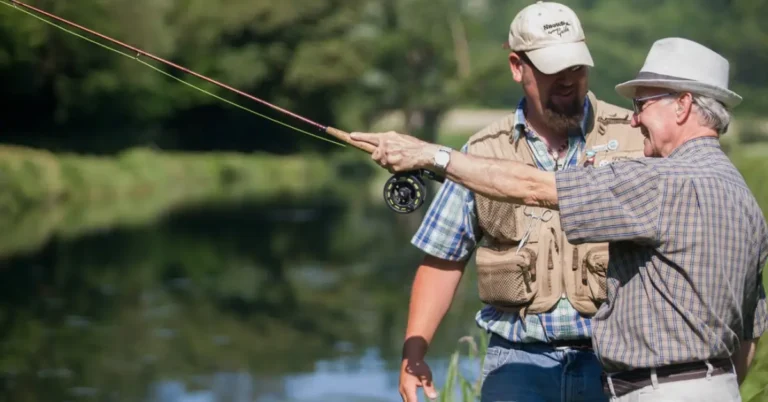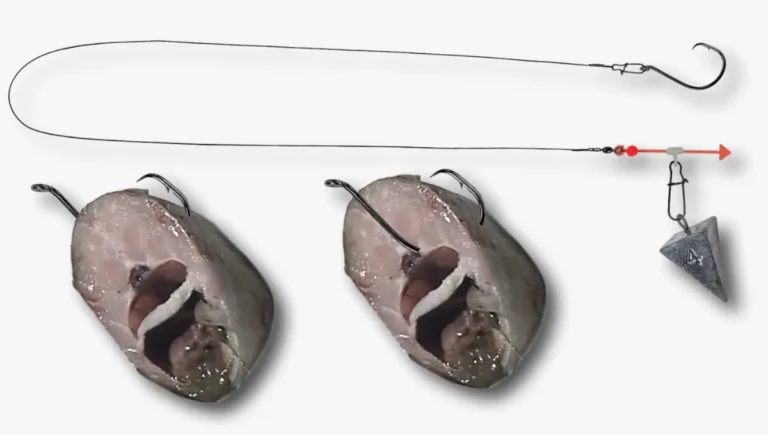What Size Weight Should I Use For Surf Fishing?
Selecting the right weight for surf fishing is paramount, influenced by factors like wind, waves, and currents. With over 40 years of experience as a FISHING CHARTER CAPTAIN along Florida’s Treasure Coast, I recognize the weight’s critical role in diverse fishing scenarios. This guide delves into the significance of lead sinkers across various fishing styles, stressing their impact on lures, jigs, and soft plastics.
Uncontrollable elements such as tide, current, and beach structure pose challenges, making the selection of the ideal surf fishing weight complex. While a 3-4 oz casting weight generally proves effective, adaptability is key.
Carrying heavier sinkers is advisable for turbulent conditions, ensuring bait stability. The guide provides valuable insights for anglers navigating the nuanced decision-making process involved in optimizing weight for successful surf fishing.
Also Read: How to Tie The Best Surf Fishing Rigs
What size weight should I use for surf fishing low tide?
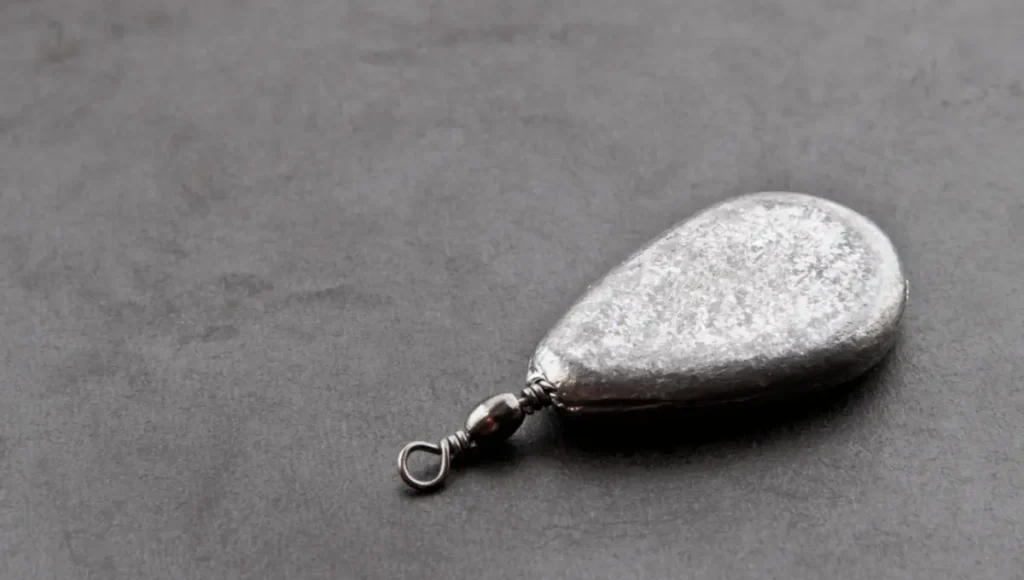
Low-tide surf fishing presents unique challenges for anglers. During the lower tide phases, fish tend to inhabit deeper waters farther from the shore, necessitating longer casting distances to reach them effectively.
While a regular fishing rod with small weights might suffice on typical beach fishing days, low tide calls for more substantial gear – a 10 to 14-foot surf rod with heavier weights.
The length of the surf rod directly correlates with casting distance, especially when using added weight. When selecting a surf rod, pay attention to the recommended weight specifications provided near the handle, indicating the acceptable sinker weight without risking damage. It’s crucial not to exceed these limits to avoid rod breakage during forceful casting.
For low-tide pompano fishing, targeting the back side of the outer sandbar proves most successful. Adding sufficient lead to reach the trough behind the sandbar enhances the chances of a catch during low tide.
Optimal fishing times include the last hours of the outgoing tide and the initial hours of an incoming tide. Adjusting sinker weight incrementally until reaching the desired casting distance ensures effective surf fishing during low tide conditions.
What size weight should I use for surf fishing high tide?
During high tide at the beach, fish tend to come closer to the shoreline, simplifying the fishing process compared to low tide conditions. Unlike low tide when casting long distances may be necessary, high tide allows for more effortless catches, sometimes even with a straightforward underhanded cast. Fish might be within reach, even just five feet from the beach in the trough.
High-tide surf fishing is generally less challenging than low-tide fishing, enabling the use of smaller weights to reach the fish. While larger weights are still necessary in the presence of big waves and strong currents, the focus shifts from achieving extensive casting distances to keeping baits stationary on the bottom.
The key is selecting a weight size that prevents bait movement with the current. Carrying an assortment of weights ranging from 1 to 4 ounces allows flexibility in adapting to different surf conditions.
What size weight should I use for surf fishing big waves?
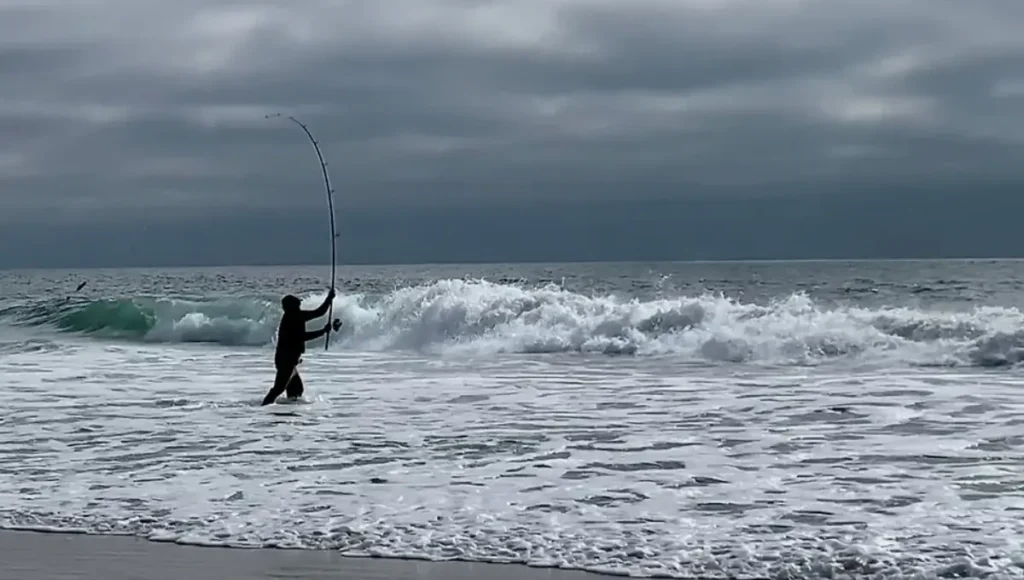
Large waves pose significant challenges for surf fishing, making it difficult to detect bites and maintain bait position on the bottom. While a 1 to 2-foot swell is ideal for surf fishing, creating favorable conditions by churning up sand bars and revealing food sources, big waves present a nightmare scenario. Despite unveiling potential fish prey, discerning between a bite and the force of a wave becomes arduous.
Engaging in surf fishing during substantial waves demands a resilient approach, with only the most dedicated surf fishermen venturing into the challenging conditions experienced along the Atlantic Coast of Florida in the Fall and Winter months.
Using heavier weights becomes imperative in rough surf, transitioning from a 2-ounce sinker for smaller waves to a 5-ounce sinker for 4 to 6-foot waves. In extreme conditions, a shift from a pyramid sinker to a Sputnik sinker may be necessary, although these prove effective but come with a higher cost, typically around 4 or 5 dollars per sinker.
What size weight should I use for surf fishing strong currents?
Waves and currents often accompany each other, much like peanut butter and jelly. However, there are instances where you may encounter substantial currents with small waves, particularly around the full or new moon. During these lunar phases, tidal movements become pronounced, resulting in unexpectedly strong currents.
In such scenarios, employing heavier sinkers from your tackle box becomes crucial for successful beach fishing. The objective remains to keep your bait stationary on the bottom despite the challenging current conditions.
I prefer starting with the lightest weight possible, adjusting as needed based on the prevailing current strength. Initiating with a smaller weight and gradually increasing it allows for better control over bait placement, enhancing the chances of a productive fishing experience.
Why you should not use too lightweight?
A lightweight sinker is also inadequate for resisting strong currents, allowing your line setup to drift easily to undesirable areas. Moreover, the slow sinking rate of a light lead increases the risk of water movements shifting the rig away from its intended location.
In surf fishing, precise casting is crucial, as fish tend to concentrate in specific areas influenced by factors such as time of day, beach structure, and currents. Relying on the current to dictate your bait’s placement can lead to it being dragged to less productive zones.
Using too light casting weights limits your control over bait placement and hinders casting distance. Light leads are less effective in overcoming air and wind resistance during casting, resulting in reduced speed and distance.
The minimum weight for effective surf fishing is 2 ounces (57 grams), as anything lighter struggles to maintain line stability, especially in less calm conditions. While lighter leads may yield results in calm waters, sudden changes in current strength can render them ineffective, necessitating a time-consuming switch to a heavier lead.
Why you should not use too heavy weights?
While adding weight is beneficial for stability and casting distance in surf fishing, opting for extremely heavy sinkers carries drawbacks. Excessive weight diminishes feedback from the line, making it challenging to detect bites or feel rod tip movements. Heavy rigs require sizable fish to produce noticeable line movement, complicating hooksets and resulting in weak and delayed responses.
Another downside of heavy sinkers is an increased snag risk, particularly in rocky terrains. Larger leads are more prone to getting caught between rock piles, weeds, and kelp. The strain on surf rods, typically 11 to 12 feet long, becomes significant, leading to added fatigue during strong currents and when battling sizable fish.
For surf fishing, anything over 8 ounces is considered too heavy. Casting heavier weights may yield marginal distance gains but sacrifices sensitivity and hook-setting capability, impacting the overall fishing experience.
Compensating for a too-heavy sinker may involve upgrading the entire gear, which can be costly. However, if opting for heavy leads (8 oz and more), consider using an extra-fast rod for increased sensitivity, choose round or egg-shaped leads to minimize snag risks, ensure the sinker is the last thing tied in your line setup for better sensitivity, increase line breaking strength, and use wire-armed sinkers for easier removal from snags and improved grip at the bottom.
What size hooks are best for surf fishing?
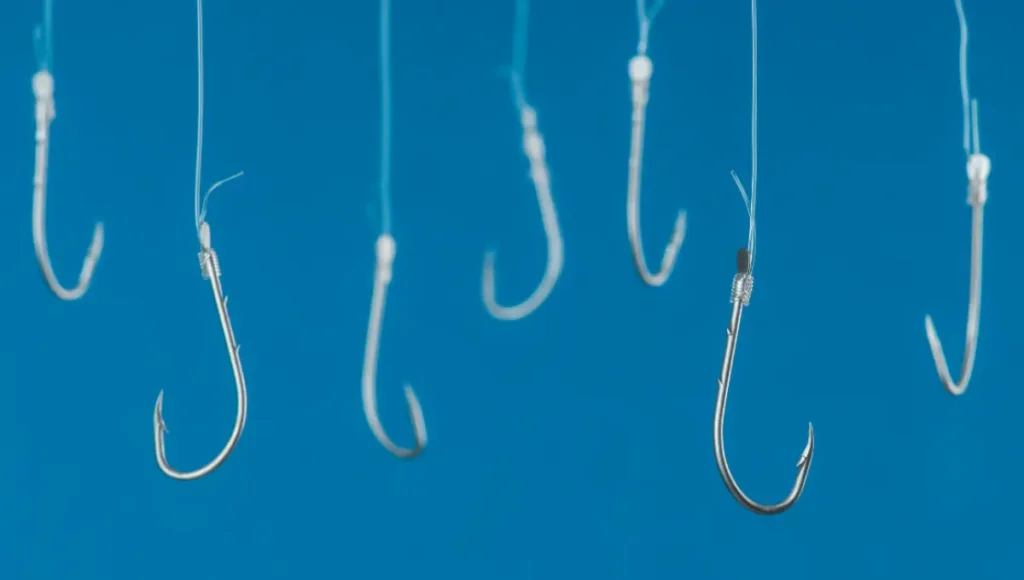
The most versatile hook size for surf fishing is the 2/0 hook, particularly the 2/0 circle hook. This size is suitable for catching a range of fish, from smaller species like whiting and pompano to larger ones such as bluefish, mackerel, fluke, flounder, redfish, snook, and tarpon.
If you’re limited to bringing just one hook size for a beach fishing trip, the 2/0 circle hook is a reliable choice. However, to optimize your catch, selecting a hook size based on the bait you’re using and the size of the targeted fish is advisable.
For smaller fish, choosing hooks as small as a #1 can be effective, while opting for larger sizes like a 5/0 is preferable when targeting larger species such as sharks and tarpon from the beach.
Frequently Asked Questions
Conclusion
Determining the optimal weight size is a critical factor for successful surf fishing on the beach. It’s essential to align your weight choices with the prevailing conditions, considering factors such as heavy surf, strong currents, powerful onshore winds, and distant sand bars. The ability to match weight sizes to specific conditions improves your chances of a fruitful fishing experience.
With practice, you’ll develop proficiency in selecting the right weight sizes, honing your skills to adapt to various surf fishing scenarios. It’s advisable to carry an assortment of sinker sizes and types to maximize your success in diverse conditions.
